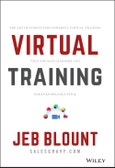Remote learning has been around since the 18th century. Caleb Phillips began advertising correspondence courses in the Boston Gazette in 1728 allowing people, for the first time, to learn new skills no matter where they lived.
For the past 300 years, virtual training, in its various formats, has been meandering into shore on an inevitable yet slow building tide. And then, just like that, everything changed. A global pandemic. Social distancing. Working from home. In an instant, the tide became a tsunami.
The global pandemic accelerated the broad adoption of virtual instructor led training along with awareness that classroom-based training is often expensive, inefficient, and fails to deliver a fair return on investment. While it is certainly more challenging to re-create the collaborative environment of the physical classroom in a virtual setting, virtual training combines the structure, accountability, and social learning benefits of classroom training with speed, agility, and significant cost savings.
Simply put, virtual training enables organizations to rapidly upskill more people, while generating a far higher return on the training investment. Virtual training is also green. Studies indicate that virtual training consumes nearly 90% less energy and produces 85% fewer CO2 emissions than classroom training.
Still, the biggest challenge with virtual training, and the reason there has been so much resistance to it, is historically the experience has been excruciating. Not the quality of the curriculum or content. Not the talent of the trainer. The learning experience. There are few people who haven’t had the pleasure of sitting through agonizing virtual training sessions. Death by voice over PowerPoint, delivered by a disengaged instructor, has an especially bitter flavor.
It is the way virtual training is delivered that matters most. When the virtual learning experience is emotionally positive:
- Participants are more engaged, embrace new competencies, and knowledge sticks
- Participants are more likely to show up to class and be open to future virtual training
- Trainers enjoy their work and gain fulfillment from making an impact
- Leaders book more virtual training
- Organizations more readily blend and integrate virtual training into learning & development initiatives
This is exactly what this book is about. Virtual Training is the definitive guide to delivering virtual training that engages learners and makes new skills and behavioral changes stick. Jeb Blount, one of the most celebrated trainers and authors of our generation, walks you step-by-step through the seven elements of effective, engaging virtual learning experiences.
- Trainer Mindset & Emotional Discipline
- Production & Technology
- Media & Visuals
- Virtual Curriculum & Instructional Design
- Planning & Preparation
- Virtual Communication Skills
- Dynamic & Interactive Training Delivery
As you dive into these powerful insights, and with each new chapter, you’ll gain greater and greater confidence in your ability to effectively deliver training in a virtual classroom. Once you master virtual training delivery and experience the power of remote learning, you may never want to go back to the physical classroom again.
Table of Contents
Foreword ix
Preface xiii
Special Note: Free Virtual Training Resources xvii
PART I The Virtual Training Tsunami 1
Chapter 1 Just Like That, Everything Changed 3
Chapter 2 Look Mom, I Built a Virtual Training Studio 9
Chapter 3 The Case for Virtual Training 15
Chapter 4 Experience Is Everything 21
Chapter 5 The Five Elements of a Legendary Virtual Learning Experience 25
PART II Mission and Mindset 31
Chapter 6 Mission and Mindset for a Legendary Virtual Learning Experience 33
Chapter 7 Emotional Discipline 43
Chapter 8 Rise Above Your Tech and Video Camera Phobia 49
Chapter 9 Good Enough Is Not Good Enough 55
PART III Production 61
Chapter 10 The Brain on Virtual Training 63
Chapter 11 The Essentials of Highly Effective Virtual Training Production 71
Chapter 12 Virtual Training Backdrop 83
Chapter 13 Live Switching 89
PART IV Virtual Communication Skills 101
Chapter 14 Be Video Ready 103
Chapter 15 Video Framing 109
Chapter 16 Body Language 115
Chapter 17 Eye Contact 121
PART V Design and Delivery 129
Chapter 18 Essentials of VILT Course Design 131
Chapter 19 Media and Visuals 147
Chapter 20 VILT Delivery Preparation 159
Chapter 21 Set the Rules 175
Chapter 22 Controlling the Virtual Classroom 181
Chapter 23 VILT Communication Plan 193
Chapter 24 The Fine Art of Engagement 207
Notes 229
Index 237








